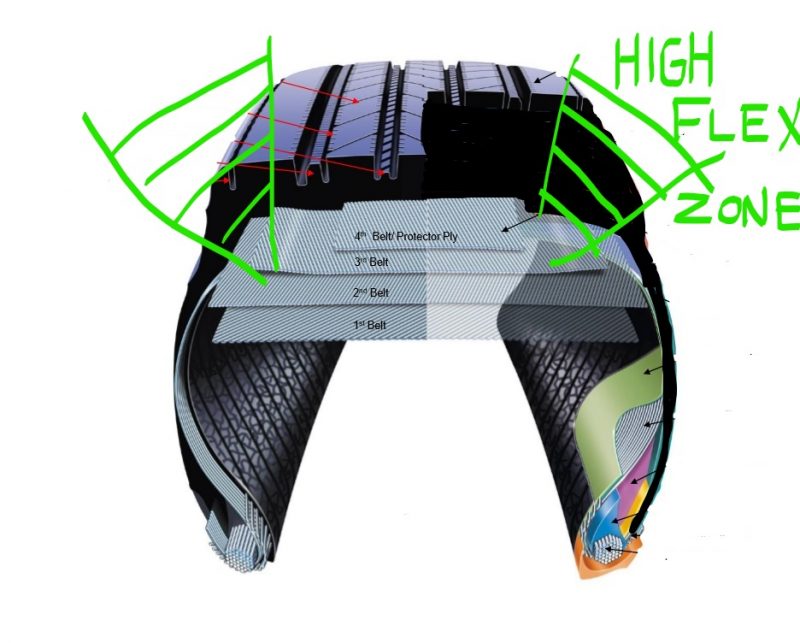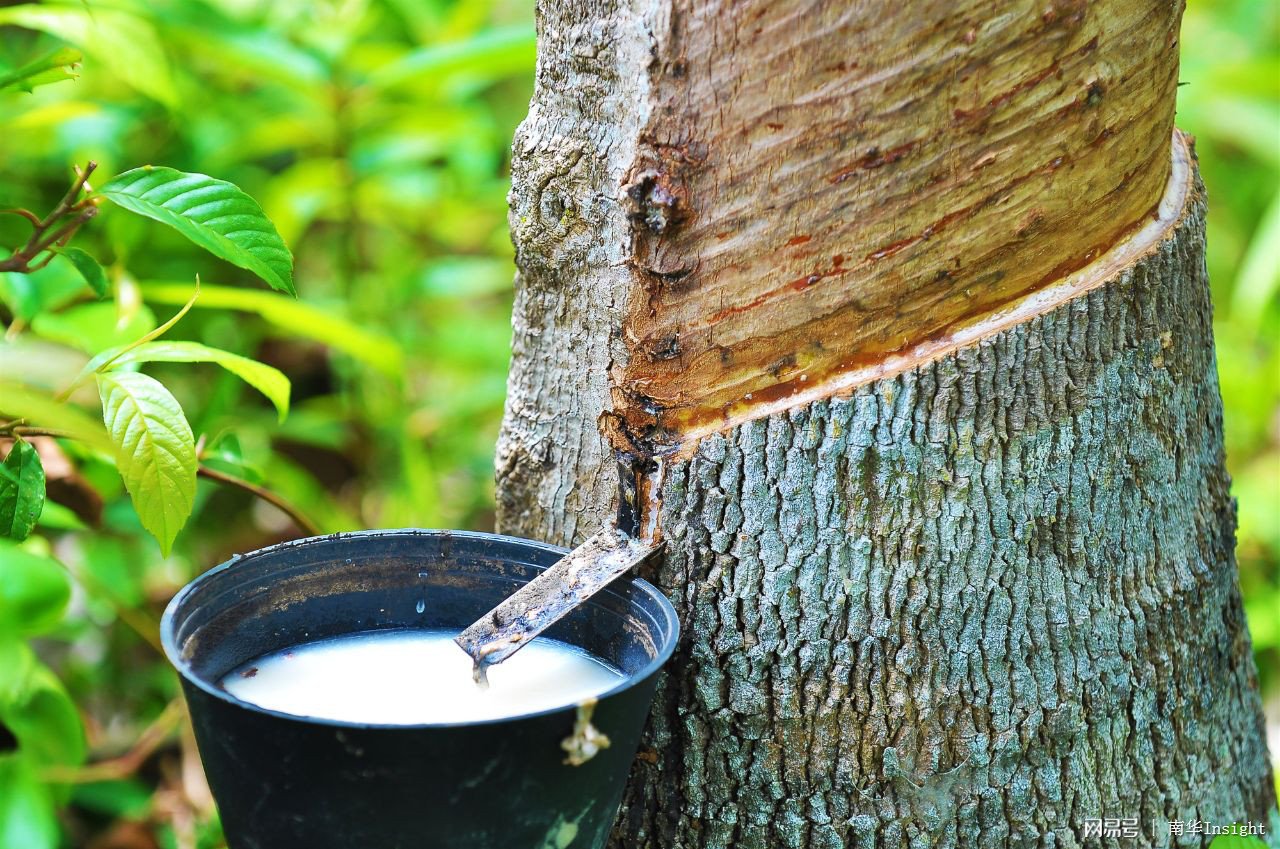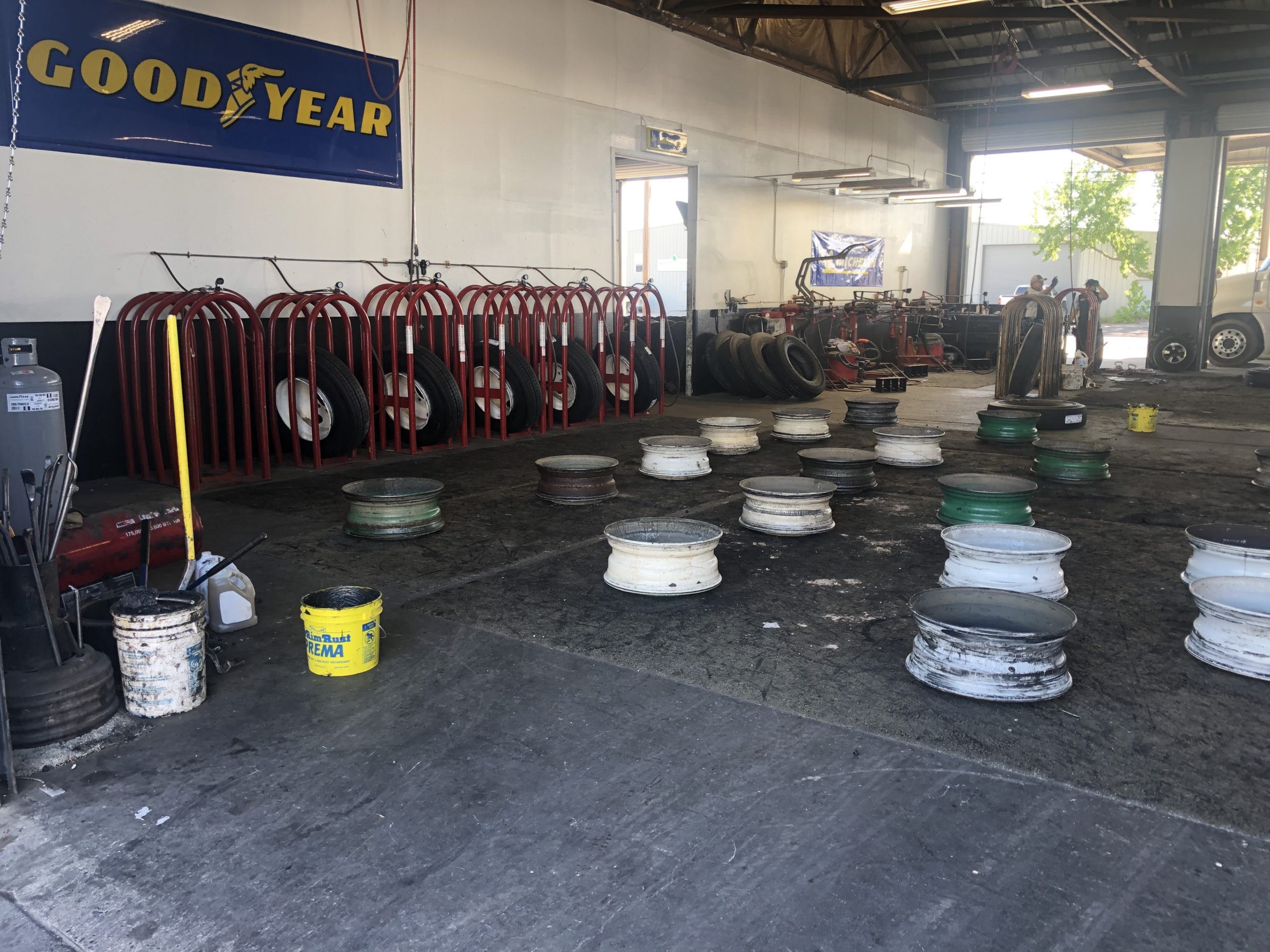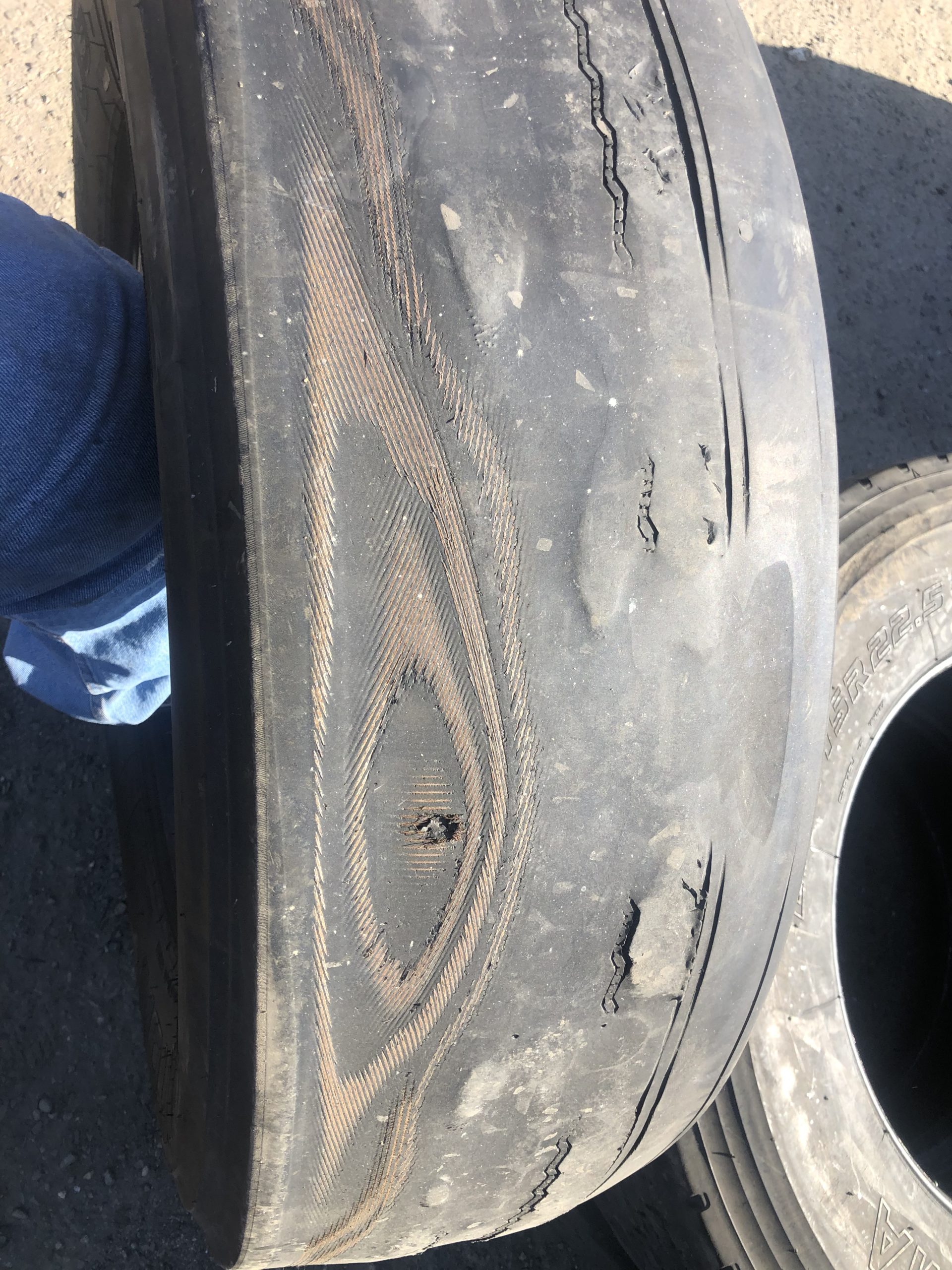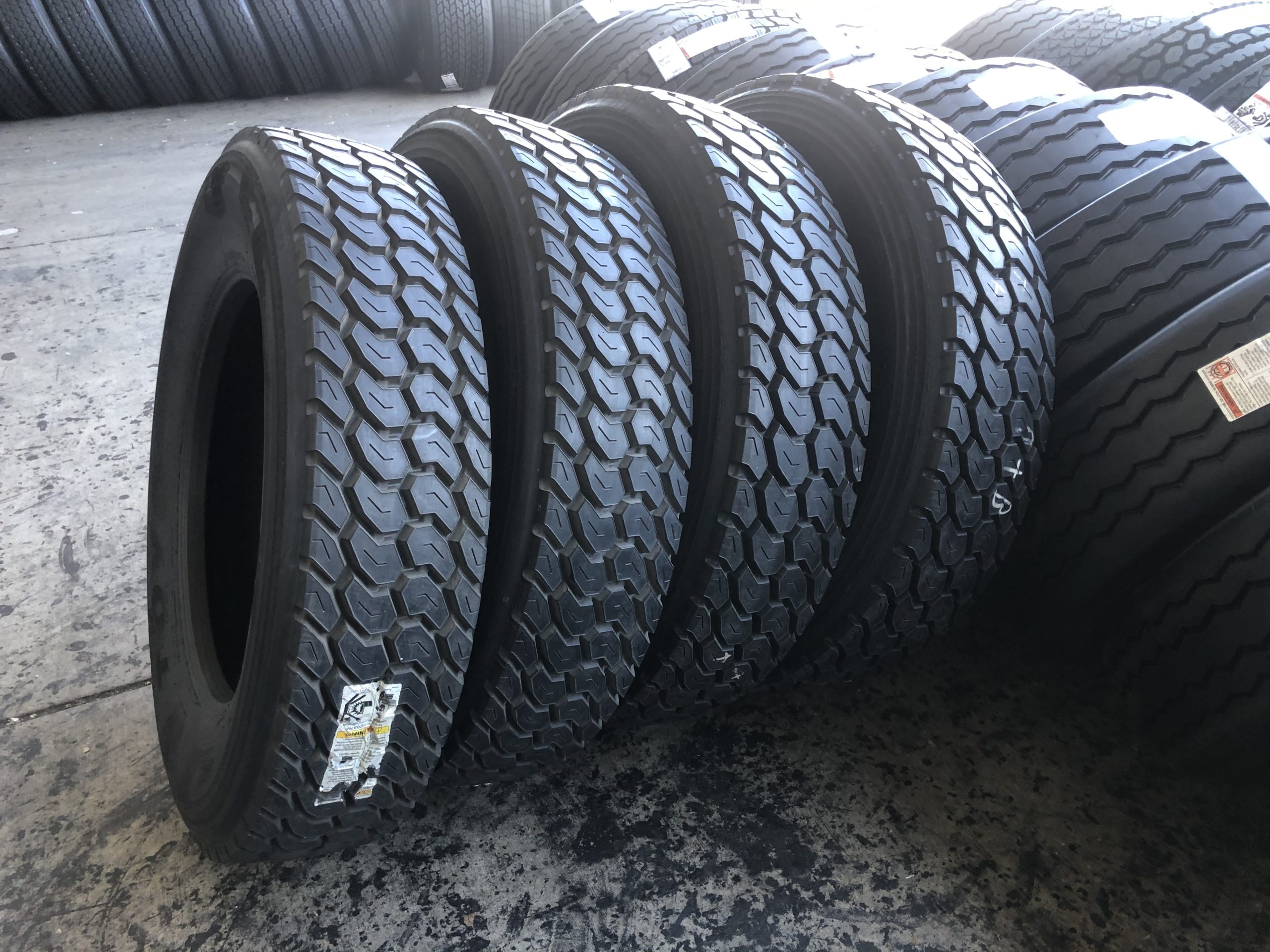Truck tires are tough. Inside a properly working truck tire is compressed air. Compressed air is measured in PSI, which stands for pounds per square inch. One square inch of the inside of a truck tire is being pushed by the compressed air in the tire with a force equal to 100 pounds. The compressed air inside a tire is made of very small particles. Truck tires have specially designed inside liners that help keep the 100 pounds of force from seeping the small particles of air out. The high butyl-content layer of rubber that makes the inner-liners less penetrable to compressed air makes tires a challenge to certain closed-loop recycling processes such as Tyromer rubber devulcanization.
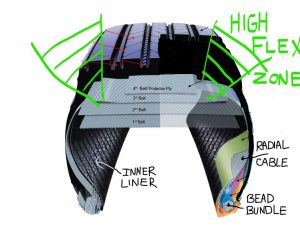
The air inside of a truck tire does the work of carrying the load, therefore a properly working inner liner is indispensable to a properly working tire. Truck tires are made with layers of steel cables as well. Going from the inside out, the first layer of steel cables is called the Radial Ply. The Radial Ply is called the Radial Ply because the cables run parallel to the radius of the round truck tire. The steel cables that make up the Radial Ply are anchored to the Bead Bundle. The Bead Bundle is a length of cable about 12 times the length of the tire’s wheel circumference, coiled up into a circle about the diameter of that wheel. The tight steel coil in a Bead Bundle becomes a strong base for the Radial Ply. The Radial Ply supports the Inner Liner, and together, these three parts allow the compressed air to do the work of carrying the load. These three parts are protected from the outside world by the rest of the tire. Some truck tires engineered for severe service have as many as 4 more layers of steel cables beyond the radial ply. More common are 3 layers of steel weave in the Crown, or tread area, and no protecting plies in the sidewall area.
As a tire rotates the portion of the tire at 6:00 takes on the weight of the truck and the rest of the tire takes on the back pressure generated in the 6:00 region of the tire. Pneumatic, or air-filled, tires ride gentler because of the flexibility of this give and take of air pressure throughout the whole tire. Some flexibility as the tread meets the asphalt also helps slow down tread wear. Some applications have achieved extreme gains in wear rate by reducing air pressure, which in turn prevents the tread skidding as it meets and leaves the asphalt. Experts agree that when the tire air pressure is matched to the load that the tire will carry tread wear can be greatly slowed.
Pneumatic tires therefore are engineered to have a different shape at 6:00 than at 12, 3, and 9. The tire sidewall in a radial tire is designed to fold just a little bit at the correct operating pressure. In the old days of Bias Tires, there were as many plies in the sidewalls as in the tread. Radial tires eventually had numerous advantages to Bias tires: They had better traction, they were more stable at speed, they took longer to wear out, they were lighter, and therefore more fuel efficient, and they were easier and safer to dismount and mount on wheels.
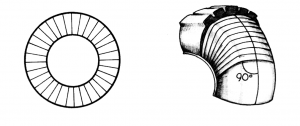
Radial Tires Have steel cables that run radially
Bias and Radial tires are made differently in their Body Plies. In a Radial tire, the Body Ply is made up of steel cables that depart the bead at a 90-degree angle. In Bias tires, the Body Ply is made up of Nylon cords that run from bead to bead, but rather than taking the shortest route possible, as a Radial Ply does, the cords on a Bias tire depart the Beads at a 45-degree angle. Radial tires have plies that mimic the weave of the Bias Body Ply, however these layers of steel cables do not go from bead to bead but instead are laid only in the tread-area, or Crown, of the tire. If a manufacturer were to lay steel weave in a truck tire the way the old nylon Bias Body Plies are laid, many of the advantages of radial steel-belted would likely be nullified.

Bias tires have nylon cords that intersect at an angle
Therefore, not all areas of a typical Radial Truck Tire have as much protection from invading objects such as nails and bolts. And, there is a zone on a radial tire that repair processes designate as the “High Flex Zone”. The High Flex Zone is the area that slightly folds as a properly inflated or underinflated radial truck tire rotates to and from 6:00. Specifically, it is where the Crown meets the sidewall, and repair processes are modified to counter the greater heat and distortion that all the flexing in the High Flex Zone creates. Small holes that were they in the crown area would require only our smallest patch, when in the High Flex Zone require 24-inch wide, rectangular, nylon-reinforced boots to stabilize the area and keep the injury from worsening. And likewise, the limit of what’s repairable in the High Flex Zone as opposed to stabilized Crown area is stricter as well.
You now have a little bit of background on how and what to think about when you see that one of your tires has picked up a nail. How close is it to the sidewall or edge of the tread? If what you have is a ½ inch bolt at the edge of the tread, and your tire’s losing pressure, it may only be repairable with one of the largest repair units available. On the other hand, if you turn in a tire with a nail on the tread edge, don’t get angry if you see it come back with a boot that’s 24 inches wide.
Thanks for reading!


